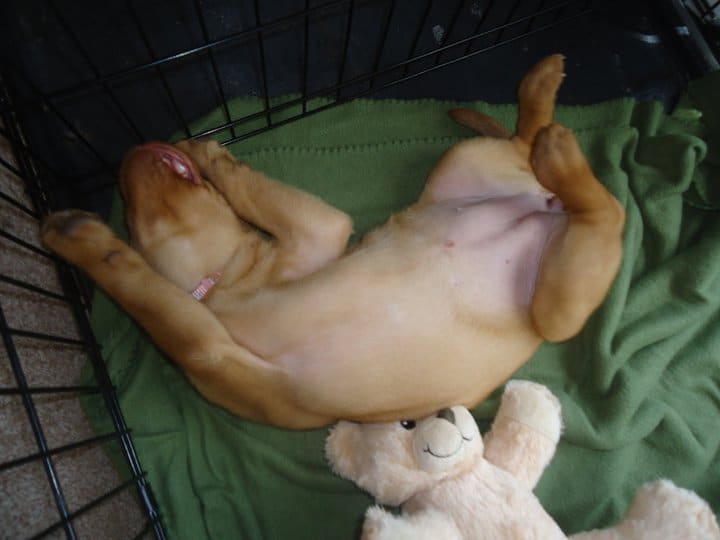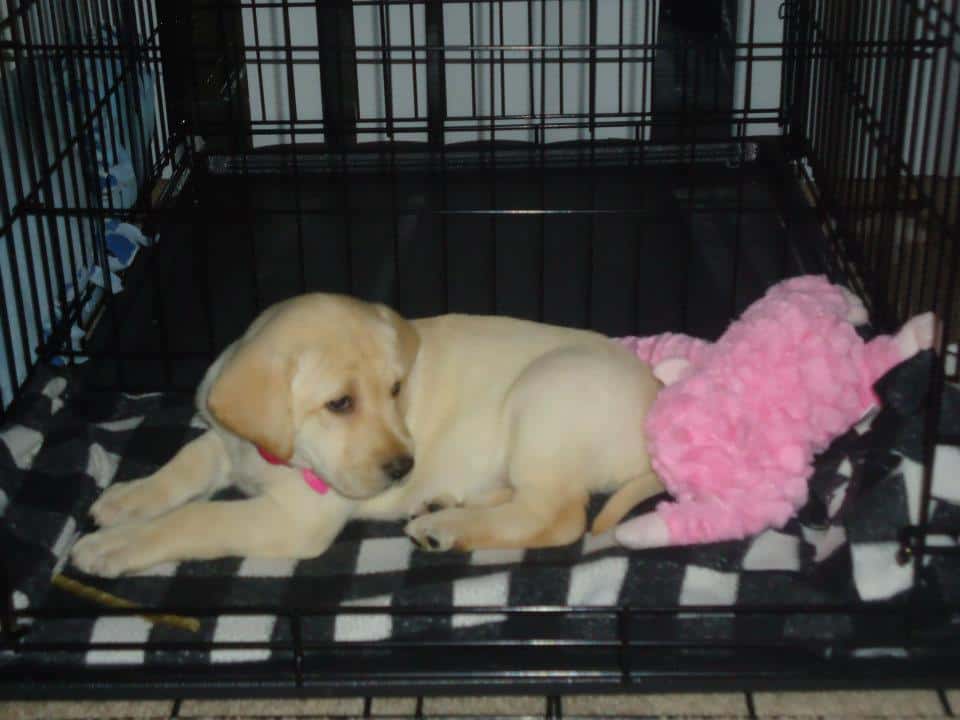

Crate Training
While I do have some tips in this area, I don't feel this is an area of expertise to Mother Pupper's. I can admit that. I have had flawlessly perfect crate training experiences, with all my dogs, from the moment they were mine. Maybe I have a great formula for crate training, like a dog whisperer. Maybe I give off a very relaxed, understanding vibe to my pups regarding to how they must feel in a new world for them. Maybe I have just got lucky. I don't know. I have certainly heard horror stories about puppies crying in the crate for hours. I have NEVER experienced this. I can't give you advise on how to handle that situation, but I can tell you what has worked for me.
TIP #1 I would never get a puppy younger than 7 weeks old. They are not mentally ready before that to leave their mother and litter mates. I hear of people getting puppies at 5 or 6 weeks old. That is crazy young. These same people are usually the ones with the worst training experiences. Studies show that 8 weeks is the ideal age for a puppy to go to their forever home.
TIP #2 The crate should be comfortable, inviting, and appropriately sized.
Comfort: A blanket, but don't over do this. Puppies actually tend to run a little on the hot side. Be careful not to put your humane emotions on your puppy. Just because you are cold, does not mean puppy is. I put down a couple layers of fleece blankets.
Inviting: I also add 1 or 2 stuffed animals that are approximately the size of your puppy. Your puppy is used to sleeping with all his/her litter mates in a big ole puppy pile. These stuffed animals might just be the ticket to make them feel comfortable, and comfort equals sleep. Do not add a bunch of toys, this s sleep time, not play time.
Appropriately sized: You want a crate that fits what your puppy "is". Think ahead. Your puppy will grow at a rapid rate, so don't get a crate made for a medium sized dog, you want to think long term. Yet, you don't want your puppy to have to much room for shenanigans either. This crate is an Investment for your family, so you want to get it right.. The ideal crate size is just enough for your dog to sleep comfortably, stretch out, fully stand up, and walk in a circle easily. The best selection, in my opinion, are the 'Grow With Me' crates. That way you can buy a crate that will fit your adult Labradors needs. Yet it comes with an adjustable insert that can be changed as your puppy grows. I highly recommend this system. I have one of these crates in my pictures.
TIP #3 This is your new puppies crate. And NOBODY else's. It might be soooooooo suuupppppeeerr-duuuuuuuper cute to have your toddler climb in that crate and cuddle up with your puppy, and your puppy won't even mind seemingly. Yet if you want crate training to be successful, a big part of that is that your puppy sees this crate as his safe area, his place to go for rest, consistently. This should be the one spot in your home that your dog sees at his, his one and only little 3 sq ft spot. I feel It's more than fair to give your dog at least this, especially if it means a well behaved, well adjusted dog.
TIP #4 Don't put your puppy in their crate when you are tired. Its ideal to have your puppy also be tired.
TIP #5 I have had puppies start to whine in their crate. Its a terrible feeling, because you realize in a nano second that you might have to get up.... ugh. The second I hear this whimpering I put my hand flat against the crate so my puppy can sniff it and lick it. I do not say a word when this happens, or make a sound. My goal is not to stimulate the puppy, yet I want to soothe the puppy. This has worked incredibly well for me.
TIP #6 Watch your puppies body language and use common sense. You know your puppies ques better than anyone. What has worked for one Labrador owner may not work for you and your puppy.
